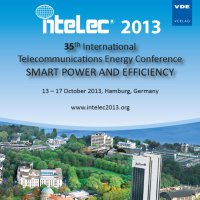A Research on Charge and Discharge Strategy of Hybrid Batteries Based on the Electrochemical Characteristics
Konferenz: Intelec 2013 - 35th International Telecommunications Energy Conference, SMART POWER AND EFFICIENCY
13.10.2013 - 17.10.2013 in Hamburg, Deutschland
Tagungsband: Intelec 2013
Seiten: 5Sprache: EnglischTyp: PDF
Persönliche VDE-Mitglieder erhalten auf diesen Artikel 10% Rabatt
Autoren:
Xiang, Chaoyao (Energy & Infrastructure Dept. ZTE Corporation, Shenzhen China)
Wu, Shiyue; Wang, Wei (Energy & Infrastructure Dept. ZTE Corporation, Shenzhen, China)
Zhao, Furong (Shenzhen Center Power Tech. CO.,LTD Shenzhen, China)
Inhalt:
The lithium-ion battery(LiB) has the advantages of longer deep cycling life, higher charge-discharge rate and higher energy density compared with the lead-acid battery. As the technology developing, more lithium-ion batteries are used in the application of 48V telecom power system. Especially in areas with poor or no commercial electricity, LiB can save more total cost of ownership(TCO) than lead-acid battery. However, due to the price of the LiB system is more than two times higher than the lead-acid battery system, the higher initial investment cost will result a lower acceptance of the lithium-ion battery for telecom users. Recently, lead-acid and lithium-ion hybrid battery concept came into application. This concept can reduce the initial investment cost of battery system with good cycling performance,which embodies the advantages of lithium-ion batteries in the electrical properties at the cycle scenario, and plays an electric performance advantages of lead-acid batteries at backup power scenario as well as low-cost characteristics, and satisfies the TCO the optimal ,besides makes the initial investment cost CAPAX lowest. Now a physical switching device such as a contactor is mainly used to transfer between the different batteries during charging of discharging process. But this solution has a lower reliability and a lower direct compatibility with existing rectifier system. This paper will analyze the different charge-discharge electrical performance of iron lithium battery and lead-acid battery at first, then propose a charge-discharge strategy based on the electrochemical characters of hybrid battery, and prove this strategy with experiment at last.


